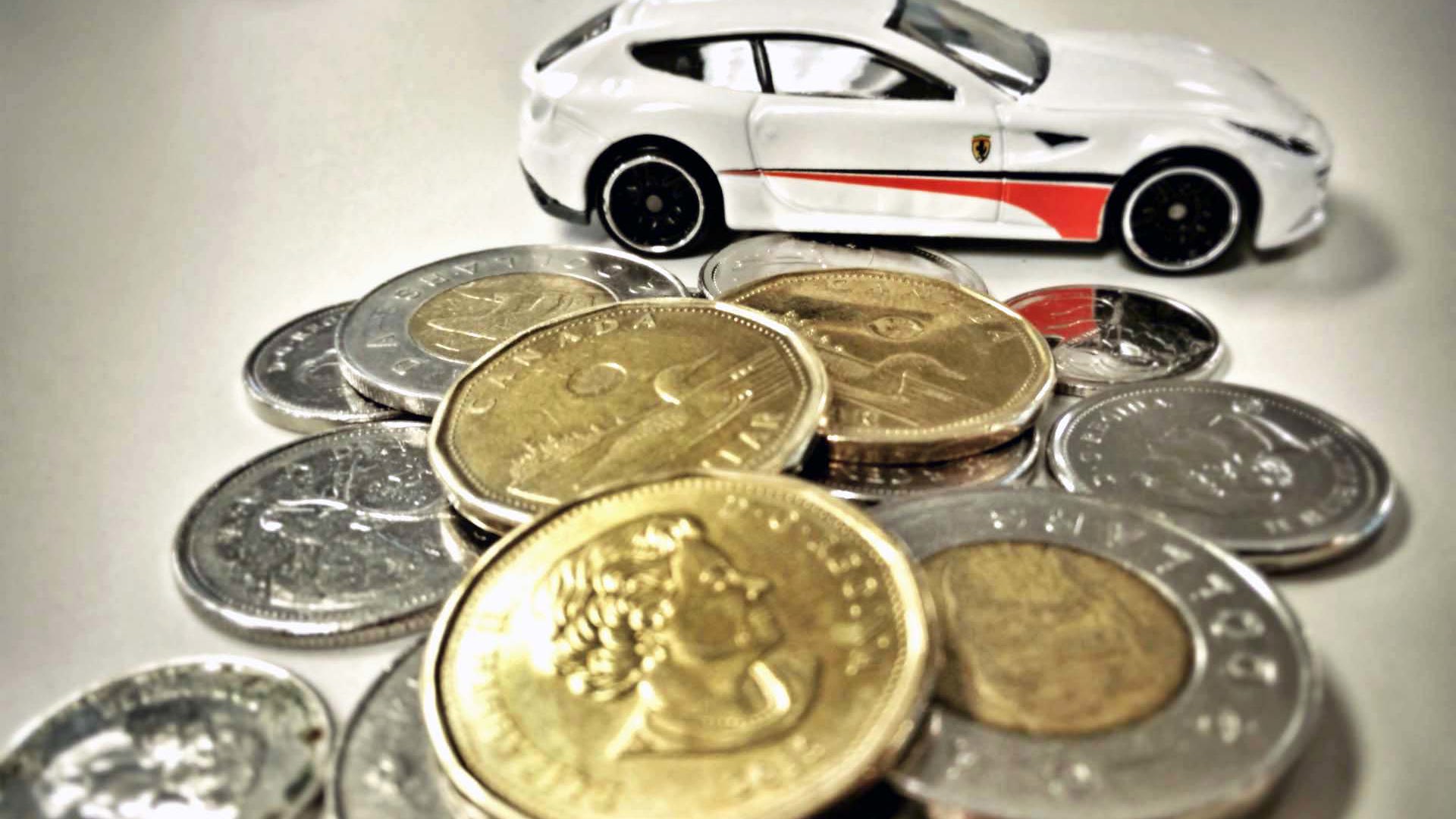There’s no shortage of vehicles available to buy in Canada, where 4.7 million vehicles are sold each year, split 60 percent used and 40 percent new in 2016. And for your interest, there are about 25 million vehicles in operation on Canada’s roads today.
With all that choice comes the potential for confusion. Once you’ve figured out what you want and been satisfied by a test drive, how do you actually finalize a purchase?
Well, some retain and pay an agent or broker to do the purchase for them, keeping the negotiating at arm’s length. It’s not a common option, but it’s a possibility. And some may try their hand at a public auction. The vast majority, however, follow the typical path of visiting a dealership or browsing “the classifieds”. This article’s mainly for those people. Here we examine the basics of buying a car, new or used, with a view to helping the consumer (the buyer) stay on top of the experience.
The process (including the paperwork) varies by province, but in all cases preparation is the key to a successful transaction. Preparation is your shield to limit, and ideally eliminate, the unexpected.
New or Used
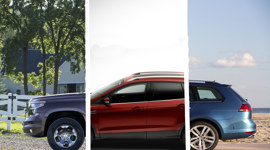
For most people looking to buy a car, the first decision is whether to buy new or used. If you’re buying new (with one exception) there’s only one place to buy, and that’s from a new car dealer (the exception is Tesla, a manufacturer from whom you purchase directly). Typically, new-car dealerships sell vehicles associated with one brand, like Mazda, Kia, Volkswagen and Subaru. Sometimes a dealership will sell two brands, representing the manufacturer’s mainstream and luxury divisions like Nissan/Infiniti, Toyota/Lexus, Chevrolet/Cadillac, or in the case of Jaguar/Land Rover, they’re both luxury brands. And of course, the same person, family or company may actually own many competing dealerships in your community.
But maybe you’re looking to buy a used (pre-owned, as they say) vehicle. New car dealers sell those too; they’ll have a separate lot and staff for this segment of their business. You’ll see all kinds of cars on these lots, not just those that are associated with the new-car section of the dealership. They can be trade-ins, or purchased at an auction. These dealers will happily service any brand, although you may wish to take the Ford you bought at a Subaru dealer to a Ford specialist for service. That’s up to you.
Then there are the independent used-car dealers. They’re not associated with a new-car dealership; they’re strictly in the used-car business. Most specialize: luxury cars, small cars, sporty cars, low-priced cars, for instance. Or maybe they’ll try to offer a range. Either way, they’re unaffiliated, licensed, independent purveyors of used vehicles.
Something to note is that they’re unlikely to operate their own garage to service the vehicles they sell (instead, they’ll make an arrangement with a local garage to get the cars ready for sale) and usually they work from a small office attached to an outside lot. Some are quite nicely appointed, located in pleasant parts of town; others are… how should we put it? More modest in presentation.
A less common form of independent dealership is primarily a garage, or service centre. The main business is repair and maintenance, but the owner may be a licensed dealer, operating a small lot to supplement income.
Finally, there are your private sellers. These are individuals trying to sell their car personally. They’re not dealers; they’re just folks. They’ll use autoTRADER.ca and/or some other listing service to advertise their vehicle and meet directly with potential buyers. There are many reasons sellers may advertise privately. And they’re not in the minority.
Interestingly, the annual used-car sales split between new vehicle dealers (on their used car lot), independent dealers, and private sellers is pretty much even. It works out to about 33 percent of used vehicle sales each.
Buying from a Dealership

Buying a car from a dealer (whether new or used) is quite a different experience than buying from a private seller. At a new-car dealership the buyer is entering a shiny, professional environment whose sole purpose is to convert browsers into buyers, and the sooner the better. They have a lot to offer: a brand-new car being the most obvious, but also a comprehensive manufacturer warranty, a (hopefully) welcoming environment, a nice lounge with coffee while you wait, and the all-important financing incentives.
Those financing incentives, along with the occasional cash rebate or leasing programs, deserve special mention, as they can be particularly attractive and a major motivator to buy new. You’ll find that manufacturers regularly support their dealerships with low-interest and sometimes no-interest financing that require no down payment and may extend over long periods (84 months, for example). These are legitimate offers, and there isn’t a bank around that can match the rates.
You may not realize, however, but as soon as you walk in the showroom door, you are being visually “qualified” by the salespeople (based on your appearance, attitude, clothing, the vehicle in which you arrived). You are being assessed on your seriousness as a buyer, your ability to afford what you’re looking at, and the likeliness of making a sale. They’ve seen and dealt with thousands of customers.
It’s fair to say, therefore, that buyers, especially first-time buyers, are at a disadvantage in this environment (which is why some use an intermediary, or go with someone more experienced). The salespeople know what they’re doing; you likely have much less experience on the process. So it helps if you’ve prepared and you know precisely what you want.
Really – and this is so important – online is where you should browse; the dealership is where you buy.
Before going, you should already know what’s in the dealer’s inventory (it’s online, check it out) and you should have a particular vehicle in mind. Furthermore, you should have priced it on the manufacturer website and checked to see if there are specials attached to your vehicle choice. Maybe you know that the vehicle you want will need to be specially ordered, or otherwise located (dealers have agreements where they share/exchange inventory).
Either way, one highly recommended option is simply to call ahead, rather than just showing up. Ask to speak to a new-car salesperson, indicate the vehicle or vehicles you’d like to see and test drive, make an appointment with that salesperson and ask to have information about your preferred vehicles available. That sounds better, yes? Exert a little control. If you arrive and the person you’ve arranged to meet is not available, personally I’d leave.
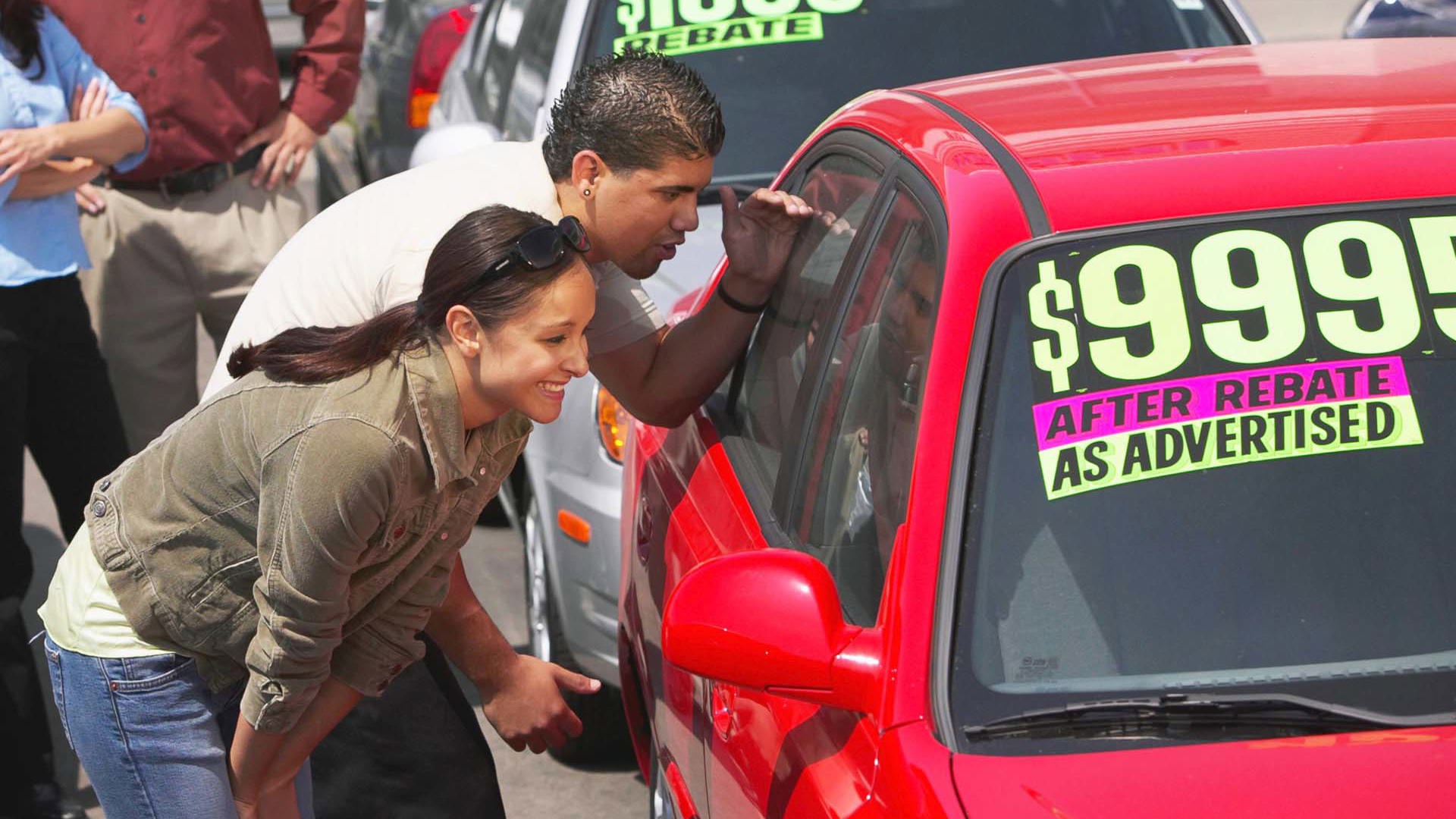
Buying from a used-car dealer is much the same as buying from a new-car dealer, although the experience may be a bit downmarket (the salespeople are just as practiced, though). The vehicles are unlikely to come with a warranty (unless there’s some remaining factory warranty) and you do not know their history unless receipts for service are available. The office, too, may be a bit rough and ready, not the polished and lacquered surfaces of the new-car dealership.
However, as with a new-car purchase, know what you want and make an appointment. Assess the punctuality and presentation of the salesperson and the quality of the environment. If you don’t like what you see… leave. In other words, you do the qualifying (believe me, there are lots of cars available). Many people visit when the dealership is closed, so they won’t be approached by a salesperson and can take their time.
Used-car dealers sell vehicles that are certified as roadworthy and emissions-tested, but you are still at liberty to take a used vehicle for mechanical inspection at a service centre of your choice. If you’re going to do that, make an arrangement with a service centre before viewing the vehicle. How much notice is required? How much will the inspection cost? There’s no need to rush – you should set the pace of the entire process.
Additionally, there’s CarProof, a Canadian company that supplies reports on a vehicle’s service and accident history. Available online and for a small fee, you key in a Vehicle Identification Number (VIN) and view/print out a report. Many dealers offer a free CarProof report on their vehicles to potential buyers. Why would they not?
Like new car dealers, used-car dealers will offer financing if you require it, but typically this will not be through a vehicle manufacturer unless it’s part of a manufacturer’s certified used vehicle program (in which case it will only be available through a lot attached to a new-car dealer). The independent used-car dealer will have made arrangements with various financing companies and leasing agents and sometimes, you should know, will receive offers of an incentive from the financing agency if a buyer uses their service.
It’s possible to imagine a scenario where a financing offer that carries a particularly high interest rate provides with it an equally high incentive to the recommending dealer. Good for the financing company, good for the dealer, not good for the consumer.
In this case, repeat after me, preparation is again the key. Arrange financing before viewing any vehicle, so you know if the finance rate offered is a good deal, and if not, one can use that knowledge to potentially negotiate a lower vehicle price to compensate. Use your own bank and make an appointment with other banks even if you don’t have an account with them.
Tell them what you want, get the best rate and pre-qualify. The bank won’t need details of the vehicle at this point; it’s like pre-qualifying for a mortgage: they don’t know what house you’re buying, but they’ll pre-qualify a particular amount. With that in your pocket, you can shop for a car without issues of financing affecting the process.
The Private Sale

When buying privately you are not dealing with professional sales people and you won’t face the intimidating pile of paperwork associated with a corporate sale. This is why a lot of people prefer to buy privately, along with the hope that they’ll pay less in comparison with dealer pricing. But still, you want to be in control of the process.
First of all – and this should go without saying – the vehicle you’re going to view must be plated and insured in order for you to take it on the road. I recall going to see a vehicle that had neither, but the owner suggested I’d be fine if I just took it around the block.
No thanks.
Beyond viewing the car (which you should do in daylight, by the way), taking a test drive and arranging an independent evaluation (recommended), the details reside mainly in payment, insurance and transfer of ownership. Not necessarily straightforward if you haven’t done it before!
The seller should have all required paperwork in place to make a sale before listing the vehicle, but the reality is that often they don’t. So it will be up to the buyer to know what’s required and do some of this work. The paperwork varies by province, but typically includes a signed registration document, a safety standards certificate, maybe a used vehicle package of some kind and certainly a bill of sale in duplicate. Sometimes the bill of sale has to follow a particular template; it varies by province, but it’s all online.
Here’s a step that you may not have considered: check that the vehicle is not stolen. First, the VIN (stamped on a plate on the dashboard, visible from outside the car) should not appear to have been altered or tampered with in any way. Check it!

Then, key the VIN into the Canadian Police Information Centre’s website – you can do this on your smartphone as you stand next to the car. It will tell you if the vehicle’s been reported stolen (your tax dollars at work!). If it has, suspend any dealings you’ve initiated and notify your local police department. This site, by the way, also tracks stolen motorcycles, snowmobiles, trailers, bicycles, firearms, property and boats.
Once you’ve found the vehicle you want, and agreed upon a price, it’s time for the paperwork. But you should never agree to actually buy the vehicle before the provincial safety standards certificate, if required, is supplied (never accept a promise that, “It will pass; it did last year”), along with current emissions compliance paperwork if required, and proof that no liens are attached to the vehicle – if money is owing on the car, you will assume that obligation, and could have the car repossessed.
In my view, this is the documentation that the seller should supply before an agreement is made and money changes hands. However, as I say, often they don’t, and it’s up to the buyer to ensure it’s in place.
As far as insurance is concerned, this must be arranged before the registration, or “ownership”, is transferred. If you’re already dealing with an insurance company, you can often do this on the phone. The company needs the VIN and the purchase price, and usually can email proof of insurance immediately (well, within the hour…).
You can also create a blank bill of sale in advance. Check out examples online or cobble one together yourself. Include the date, price, names of seller and buyer, along with addresses and phone numbers. Include the year and make of the vehicle, along with the VIN. Include a section for terms and conditions (supplied with safety certification, winter tires on rims, service receipts, anything else you have agreed to). Seller and buyer sign both copies, one for each person.
Finally, the money. A certified cheque or bank money order is preferred. It’s safer; it’s more legitimate. If the seller insists on cash (which in large amounts is unreasonable in my view), have them meet you at your bank to receive it (and arrange this with your bank beforehand; they don’t typically have large amounts available). Similarly, given that we’re on the subject, if you’re selling and someone wants to pay you with large amounts of cash (over $10,000, for sure), you should be wary. It’s irregular.
Many of the above responsibilities represent things typically managed by a dealer, which is why many people simply avoid private sales. Dealers, after all, handle almost all of the details and as legitimate businesses, they do have a reputation to maintain. In contrast, private sales can be a hassle, but if you set the terms and prepare, it can work out to your advantage.
| New-Car Dealer | Used-Car Dealer | Private Sale | |
|---|---|---|---|
| Safety Standards Certificate | N/A | Ensure that compliance with provincial safety standards is included in the agreed price. Request an itemized list of work required and/or performed on the vehicle for compliance. | A safety standards certificate, if required in your province, must be supplied by seller unless vehicle is sold “as is”, in which case the buyer assumes responsibility to certify it. Purchasing “as is” is rarely a good idea, unless you really know what you’re doing. |
| Emissions | N/A | N/A | Vehicle may need to be tested for emissions. Check the appropriate provincial website and enter the Vehicle Identification Number to determine status. |
| Insurance | You must secure insurance before the vehicle can be registered in your name. If you are already dealing with an insurance company, proof of insurance can usually be emailed on the same day if required. If you are not already dealing with an insurance company, get quotes from several as rates vary, sometimes significantly. | ||
| History | N/A | CarProof is a Canadian commercial service that, for a fee, will supply a vehicle history that details accidents, repairs, and thefts. Ask the seller to supply the CarProof report for your examination. Or get it yourself.
Additionally, a service history (receipts documenting service and repairs) is a valuable aid for the buyer. No service history may mean the vehicle has not been properly serviced. |
|
| Finance | Determine financing offers from the manufacturer and personally compare with banks for their best rate on your deal. | Pre-arrange financing before viewing vehicles. | |
| Price | A subject in itself! The dealer is looking to get the MSRP (Manufacturer’s Suggested Retail Price), or very close. The buyer would like to pay less than MSRP. The CAA, for example, offer services to help with this. | The dealer is looking to get the asking price. Check autoTRADER.ca for the asking price of similar vehicles. A dealer is expecting an offer below the asking price and will typically accept a close reasonable offer. | Check autoTRADER.ca for the asking price of similar vehicles. Make a reasonable offer below the asking price. |
| Trade-In | Used-car manager will appraise. Expect to be offered less than you expect. | Expect a lower offer than you may expect. If your trade-in has little value, the dealer may only accept it as a “courtesy” trade. This could result in an offer of $500 or less, for example. | Typically not part of the deal. |
| Convenience Trade | A convenience trade is a legitimate process. The idea is that the dealer may offer you, say, $4,000 for your trade-in, but you have found someone (friend, relative, private buyer) who will pay $6,000. The dealer therefore allows $6,000 for your trade and agrees to sell it to your buyer for that amount. | Possible | N/A |
| Licence Plates and Registration | Will be arranged by the dealer.
Note that the MSRP does not include pre-delivery/inspection fees, air conditioning tax, tire disposal fees and sales taxes. |
Seller can deliver the vehicle and remove the plates, or buyer can bring plates and install them at the seller’s residence. Either way, the seller’s plates must be removed from the vehicle.
With one exception, expect to pay taxes, which vary by province, when transferring ownership. In addition, expect to pay a transfer fee. |
|
| Fees and Taxes | Expect a dealer administration fee; note what it includes. Check your sales contract carefully and question any “extras”. | There may be a dealer administration fee. Ask beforehand. | There will be no transaction fees between buyer and seller. |
| Sales Contract | A sales contract is a commitment for the buyer to buy and the seller to sell if certain conditions are met. Ensure all promises regarding the vehicle are written into the contract. Like an offer on a house, the buyer can add items and conditions to the contract before it is signed. | Private sales typically don’t include a contract, as the parties rely on the bill of sale for clarity. However, drawing up a document that itemizes expectations and attaching it to the bill of sale before concluding the transaction is a good idea. | |
| Bill of Sale | The buyer will receive a comprehensive bill of sale that is effectively a receipt indicating the sale has concluded, wherein goods and money have been transferred as agreed. Signing the bill of sale acknowledges your agreement with it. | A bill of sale can be simple or comprehensive. Different provinces have different rules as to the required contents of the bill of sale, so check the associated website. Some details are listed in the following section. As mentioned above, it’s in the interest of both parties to specify the terms of the sale and include all pertinent details. | |
The Details by Province
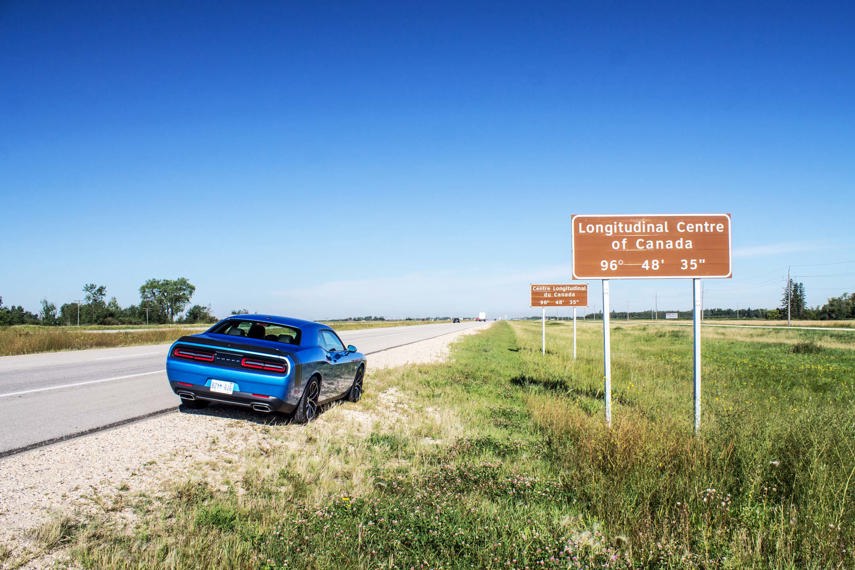
In Canada, the rules for buying and selling a vehicle, like health care and education, are the responsibility of the provinces. And each province has its own standards and requirements. If you live in Saskatchewan, for example, you might be surprised that people in other provinces pay provincial sales tax on a vehicle each time it changes hands. In Saskatchewan they pay on the full new-car price, and that’s it. However, as of April 1, 2017, Saskatchewan residents may not subtract the value of a trade-in from the purchase price of a new vehicle before applying the PST, which in most other provinces they can.
In Quebec, ownership of a vehicle can’t be transferred if either the buyer or the seller has unpaid fines. And inconveniently, those fines can’t be paid at the vehicle registry office.
Antique vehicle owners in Nova Scotia are exempt from a vehicle inspection when transferring ownership, whereas in Ontario, owners have to procure an official appraisal, the value of which they pay HST on, and a provincial Safety Standards Certificate. They don’t need an emissions test, though.
Below are some of the key requirements when transferring ownership of a used vehicle in each province. New vehicle dealerships typically handle all of the administrative details below. Not that they necessarily have big hearts; they just want to get you out of the dealership and on the road ASAP! This is a lesson for the used-car seller, though. Make it easy for the buyer to buy!
Newfoundland and Labrador
Seller and Purchaser Obligations
The seller is required to notify the Motor Registration Division within 10 days of the sale of a motor vehicle. A Notice of Sale is provided on the reverse of the vehicle registration permit for this purpose.
The purchaser is required to transfer ownership of the motor vehicle within 10 days.
Transferring Ownership
The buyer must supply the seller’s vehicle registration permit (the seller must be the registered owner of the vehicle), a bill of sale and/or a sworn affidavit, a completed and signed insurance declaration (found on the reverse of the seller’s vehicle registration permit), a motor vehicle safety inspection certificate.
Bill of Sale Information
The Bill of Sale must contain the date of sale, buyer’s name and driver’s licence number, year, make, model of the vehicle, plate number and serial number, purchase price, name and signature of the seller. A bill of sale is provided on the reverse side of the current vehicle registration permit or you may use a separate document.
Applicable Fees
Transfer fee, provincial sales tax on the purchase price or the Red Book value of vehicle, all outstanding fines appearing on the buyer’s record.
Sworn Affidavit
A sworn affidavit from the buyer and seller is required when the purchase price of the vehicle is below the wholesale Red Book value.
Nova Scotia

Seller and Purchaser Obligations
The seller must sign the notice of sale portion of Certificate of Registration, indicating to whom the vehicle was sold, and immediately return the Notice of Sale to the Registry of Motor Vehicles.
Within 30 days of the date of purchase, the purchaser must complete an Application for Certificate of Registration including the tax declaration, to register the vehicle. Any applicable tax, along with the appropriate transfer, and/or registration fee must be remitted to the Registry of Motor Vehicles.
Transferring Ownership
A Statement of Insurance form must be completed. Applicable tax must be paid to the Registry of Motor Vehicles at the time of the transfer. Tax is based on the Red Book Value of the vehicle or the purchase price, whichever is greater. If a used vehicle is purchased privately the vehicle must display a valid Motor Vehicle Inspection issued within 30 days prior to the date of sale in the name of the seller, or a valid Motor Vehicle Inspection sticker must be obtained by the buyer prior to transfer.
Vehicles Not Requiring Motor Vehicle Inspection
• Antique vehicles
• Vehicles bearing a valid New Brunswick or Prince Edward Island inspection in the name of the vehicle registrant.
New Brunswick
Seller and Purchaser Obligations
Seller must complete a seller’s affidavit, signed by a Commissioner of Oaths, regarding the sale of a vehicle. The buyer must submit proof of insurance.
Transferring Ownership
The signature of the registered owner is required on the certificate of registration. The purchaser’s name, address and date of birth are required on the transfer document. The purchaser must surrender the registration certificate and have the vehicle transferred into their name at any issuing office. If the purchaser cannot be present, they must provide written authorization to have someone act on their behalf. The collection of sales tax and motor vehicle fees are required at time of transfer. The vehicle cannot be driven or permitted to be driven until the registration certificate is recorded in the new purchaser’s name.
Prince Edward Island
Seller and Purchaser Obligations
To transfer a vehicle the seller must complete and sign off the back of the registration-marked vehicle permit. The seller must complete the Notification of Transfer form on the registration permit and mail within seven days of the transfer date.
Transferring Ownership
The buyer shall within seven days of the date of transfer have the registration of the vehicle transferred into their name. When transferring the buyer must present:
• Vehicle permit (signed off by previous owner)
• Bill of sale (receipt)
• Motor vehicle inspection form (in the present owner’s name or buyer’s name)
• Valid insurance card (pink slip)
Tax will be collected on Red Book value, bill of sale or appraisal, whichever is greater.
Quebec
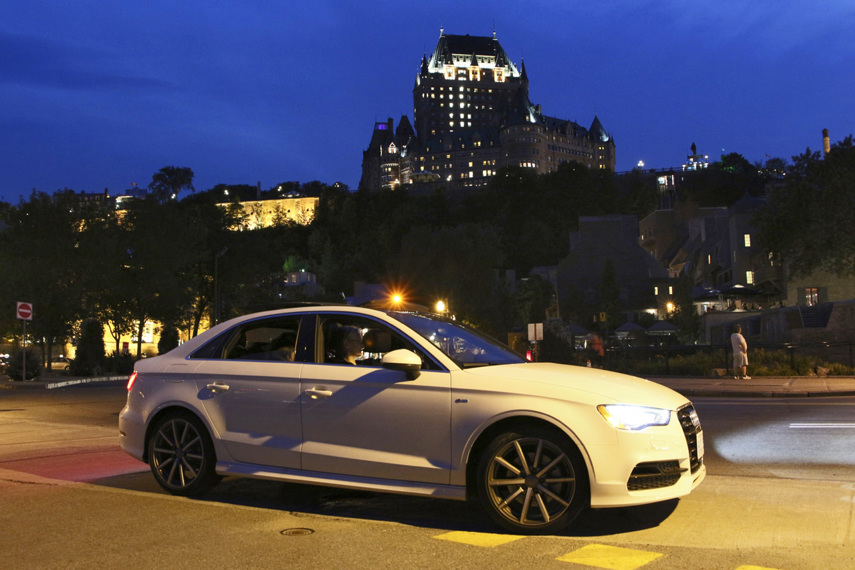
Seller and Purchaser Obligations
Both the buyer and the vehicle vendor must be present to transfer the vehicle’s ownership and registration. Quebec supplies a means to determine whether the seller of a vehicle is its legitimate owner, and if there is an outstanding loan on the vehicle. They must each bring their driver’s licence and a vehicle odometer reading.
Transferring Ownership
A Vehicle Record is available that indicates whether the vehicle has passed a mechanical inspection, whether it’s been used as a taxi, how many owners it’s had and whether it has been rebuilt.
Applicable Fees
Provincial QST is payable, but not GST if the sale is private. Quebec operates a public insurance program managed by the Société de l’assurance automobile du Québec (SAAQ). Individuals must supplement this with liability insurance. Proof of this insurance is required.
Ontario
Seller and Purchaser Obligations
In Ontario, private sellers aren’t required to do much. It’s the buyer that does all the work.
The buyer will need to register the vehicle within six days of purchase. Required documents include a driver’s licence, a completed Used Vehicle Information Package ($20, supposed to be supplied by seller, but typically is not), a Bill of Sale (the Used Vehicle Information Package includes a basic Bill of Sale), proof of insurance, and the original vehicle permit from the seller with competed transfer portion. If you already have licence plates, you can bring the plate portion to transfer them to the new vehicle.
If you’ve bought an antique vehicle, you must procure an appraisal value. If you paid less or more than the appraisal value, you pay tax on the higher amount.
Additionally, an Ontario Safety Standards Certificate must be presented.
Transferring Ownership
Upon presentation of the above documents, HST is applied to the purchase price or the assessed value, whichever is higher. A transfer fee is paid, along with a fee for the licence plates.
Regarding the Used Vehicle Information Package, it’s highly recommended, but not mandatory, that this be obtained and read before purchasing the vehicle. The seller is supposed to supply this, but typically doesn’t. Buyers can obtain one at their expense. It contains information concerning current liens on the vehicle and lists former owners. Valuable information!
Manitoba
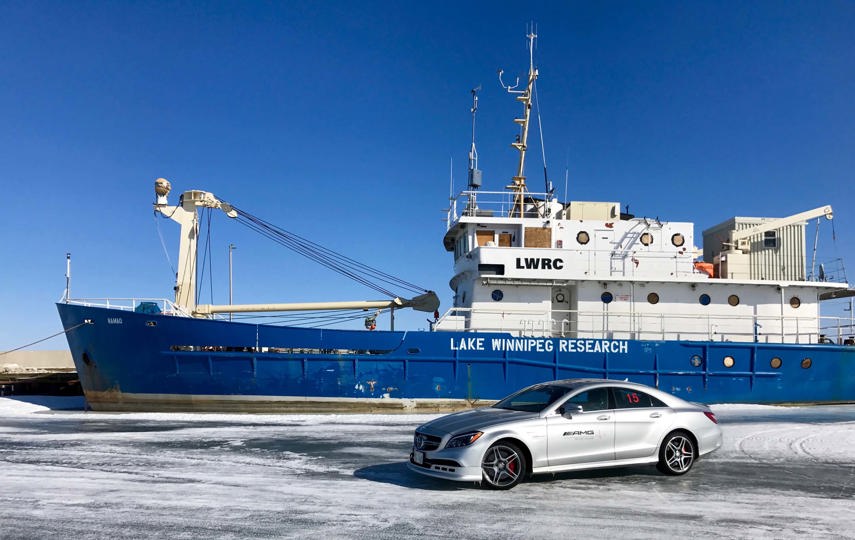
Transferring Ownership
A bill of sale signed by both parties is required, along with a current Certificate of Inspection, a Transfer of Vehicle document and insurance coverage.
Insurance
Like Quebec, the Manitoba government operates a mandatory public insurance program that is required to be in place before you can transfer ownership of a vehicle. Sold through Manitoba’s Autopac agents, the insurance covers all perils, collision and liability. Additional coverage can be purchased.
Bill of Sale Information
Manitoba has specific requirements for the Bill of Sale that must be produced when transferring ownership. The province provides a downloadable template on its website.
Saskatchewan
Seller and Purchaser Obligations
In Saskatchewan, when you purchase licence plates, you pay a flat registration fee and receive a basic package of insurance which includes coverage to your vehicle subject to a deductible, coverage for personal injury as a result of a vehicle crash, liability for damage your vehicle may cause to the vehicle or property of others or injuries it may cause to other people.
Transferring Ownership
A completed Transfer of Ownership form is required, along with a completed Bill of Sale signed by both parties (a pdf is supplied on the website), payment of PST if applicable, and a Vehicle Inspection Certificate only if the vehicle is being registered for the first time in Saskatchewan.
Saskatchewan offers a free online service that looks up the VIN of the vehicle and provides information concerning the vehicle’s status, its most recent registration expiry date, its damage claims history in Saskatchewan and whether Saskatchewan PST is payable.
Saskatchewan has recently removed the allowance whereby sales tax is applied to the value of your new car minus the value of the trade-in. As of April 1, 2017, Saskatchewan residents will always pay sales tax on the full value of the new vehicle. However, residents of other provinces will be jealous to know that in Saskatchewan, PST is not payable when transferring ownership of an eligible used car.
Alberta
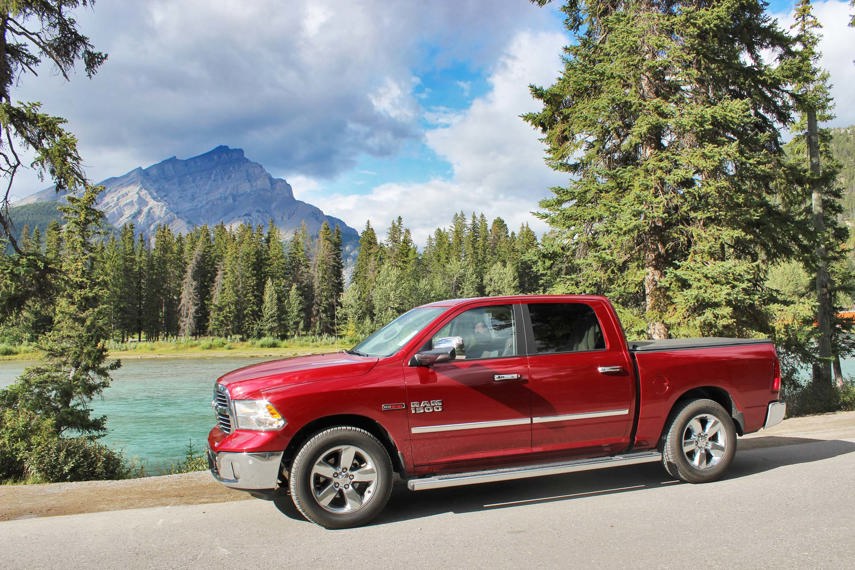
Transferring Ownership
Alberta residents need to present a Bill of Sale and proof of insurance to a government registry agent. An inspection certificate may not be required. Alberta has arrangements with British Columbia and Saskatchewan to expedite vehicle transfers without the requirement of an inspection certificate based on the vehicle’s age and previous use. The registry agent will determine whether the vehicle needs to be inspected.
Alberta suggests having the following technicians perform an inspection for mechanical fitness:
• A certified technician who can let you know if it is mechanically sound.
• A certified autobody technician who can determine the structural integrity of the vehicle.
Buyers are also advised, but not required, to get a Vehicle Information Report from a registry agent that describes the vehicle’s registration history in Alberta. Also advised is a Personal Property lien search, also from a registry agent.
The government website advises that if you leave a deposit with a seller against a vehicle then change your mind, the seller is not required to refund your deposit. If you want to ensure that your deposit will be refunded if you change your mind, it should be agreed to in writing and signed by both parties.
British Columbia
Buyer and Seller Obligations
In British Columbia, it’s the seller who picks up a Transfer/Tax form from an Autoplan broker (BC, like Quebec, Manitoba and Saskatchewan, operates a provincial public insurance plan). The insurance and registration are two parts of the same document, and the seller removes the signed registration part, which is given to the buyer. The buyer receives the registration form and fills out the purchaser’s portion. It’s strongly suggested that both the buyer and seller go to the Autoplan broker together to complete the transaction.
A comprehensive vehicle inspection is suggested, but not required. Tax is applied to the purchase price.
Yukon Territory
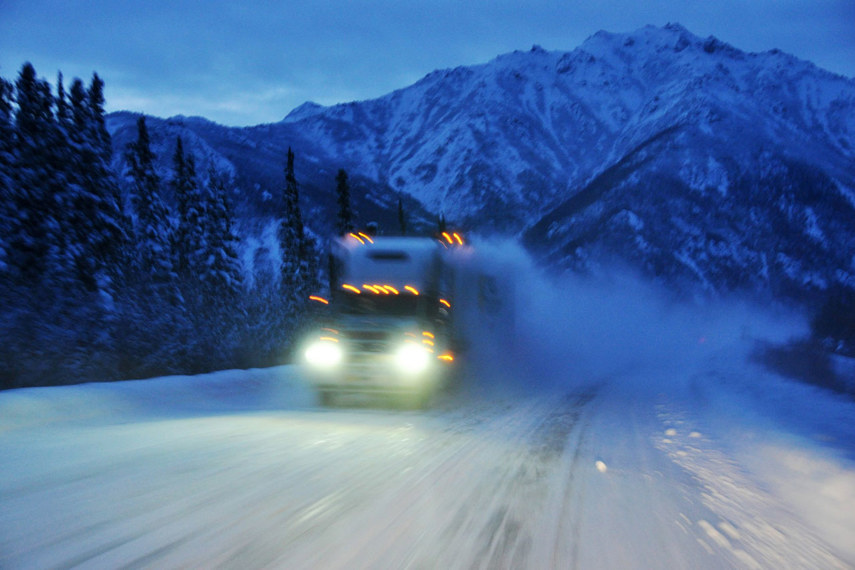
The following information is taken from the Yukon Department of Highways and Public Works.
Registering a Vehicle
It costs at least $42 to register a vehicle in Yukon Territory, increasing based on the size of the vehicle. The rules state:
“If it’s a brand-new vehicle you will need the NVIS (New Vehicle Information Statement), the signed and dated bill of sale and proof of insurance.
“If it’s a second-hand Yukon-owned vehicle you will need the signed and dated bill of sale and proof of insurance.
“If it is a second-hand out of Yukon vehicle, you will need a signed and dated bill of sale, the previous registration and valid insurance.”
Bringing a Vehicle from “Down South” into the Yukon
The Yukon Motor Vehicle Registry offers some delightfully homespun advice for those buying a vehicle from “down South.” We respectfully reproduce verbatim from the Yukon government’s Department of Highways and Public Works.
“There are three basic ways to do this,” says the Department website:
a) You can register your newly purchased vehicle via fax once you get all of the required documentation. This seems like the fastest way, but can become delayed by communication problems.
b) You can purchase a permit from the jurisdiction you bought the vehicle in and any subsequent jurisdiction you may be travelling through. Once you get to the Yukon, you can purchase a temporary permit from the Watson Lake Scales or the Territorial Agent at the Watson Lake Liquor Store. (This process can be long and costly in regards to the insurance requirements.)
c) If you already own a vehicle registered in the Yukon, (this we find is the simplest method) you need to:
• Remove the plate from your currently registered vehicle and take it with you (along with the registration belonging to that plate) to where you are going to be purchasing your new vehicle.
• Once you have a completed bill of sale, advise your insurance company that you will need insurance for the new purchase.
• When the insurance company has issued you an insurance card (a faxed copy will suffice) you can put your plate onto the new vehicle and drive it back to the Yukon.
Northwest Territories
The Department of Motor Vehicles provides online information regarding the renewal or cancellation of vehicle registrations, but no material that covers transferring ownership or registering a vehicle. Google lists three new car dealers and two independent used car dealers in NWT.
Nunavut
According to Peter Worden, writer for Up Here magazine, “The first thing you need to know about buying a new car in Nunavut is that you can’t buy a new car in Nunavut.” The second thing you need to know, he continues, “is there are no roads in Nunavut.” While amusing, this is something of an exaggeration, as there are roads (although some are made of ice) and drivers on them must be licenced. There is a Motor Vehicles Division of the Department of Economic Development and Transportation. Furthermore, there is a manager of motor vehicle safety and inspections.
And yes, there is an official Nunavut licence plate, affirming that car ownership certainly exists. In fact, 776 vehicles were stopped in one day last year at sobriety checkpoints throughout Nunavut (driving while impaired is an issue in Nunavut, as it is in all provinces and territories). According to Wikipedia, about 4,000 vehicles are registered in the territory.
One thing is for sure, though. You cannot drive to Nunavut. At least, not by car, and not on any permanent road.
Further Research
Buying a car: https://www.caasco.com/Auto/Buying-a-Car.aspx
Guide to buying a used car: http://www.autotrader.ca/HowTos/BuyingAUsedCar.aspx
Active recalls on your vehicle: http://wwwapps.tc.gc.ca/Saf-Sec-Sur/7/VRDB-BDRV/search-recherche/menu.aspx?lang=eng
Comparative cost of insurance for your vehicle: http://www.ibc.ca/nt/auto/buying-auto-insurance/how-auto-insurance-premiums/how-cars-measure-up
Canadian Police Information Centre: http://www.cpic-cipc.ca/index-eng.htm
